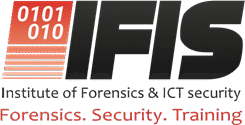There’s no patch for human error.
You can spend billions on the latest firewall, deploy AI-powered threat detection, and encrypt every byte of data in your system, but if your staff clicks on the wrong link, it all crumbles like a house of cards.
Welcome to the frontline of cybersecurity, not the SOC. Not your firewall. But your people.
The weakest link, or your greatest asset?
Ask any hacker, and they’ll tell you the truth: humans are easier to hack than machines.
Phishing attacks don’t need to brute-force passwords; they need curiosity. Social engineering doesn’t exploit system flaws; it exploits trust. Ransomware doesn’t walk in through the server room, it strolls in through your receptionist’s inbox.
In over 90% of cyber breaches globally, human error is involved. In Uganda, recent financial sector cases revealed staff unknowingly exposing login credentials through spoofed emails and WhatsApp messages. The criminals didn’t bypass firewalls, they bypassed awareness.
So what’s the solution?
Build a human firewall, not just a technical one
The human firewall is your trained, vigilant, cyber-aware workforce. It’s your receptionist who knows that an invoice from an unknown supplier is suspicious. Your finance officer who calls to confirm before changing payment instructions. Your IT admin who doesn’t reuse passwords across platforms.
It’s the cultural shift from “IT’s job” to “everyone’s job.”
5 principles of a strong human firewall
- Cybersecurity is behavioural, not technical. Training must focus on habits, not just knowledge. It’s not enough for staff to “know” what phishing is, they must develop a reflex to pause, question, and verify.
- Make it local and real. Generic e-learning won’t cut it. Use real Ugandan case studies. Show how a fraudster impersonated a known supplier via email and walked away with UGX 80M. Context creates relevance. Relevance creates retention.
- Repeat until it sticks. Cyber awareness isn’t a one-off training during induction. It’s a culture, weekly tips, monthly drills, fake phishing tests, team leader reminders. Frequency fights forgetfulness. Attend our upcoming IFIS cybersecurity conference and network with industry professionals.
- Reward alertness. Celebrate the staff who report suspicious emails. Make them heroes. Build a badge system. You don’t just want compliance, you want champions.
- Executive role modeling. When the CEO falls for a scam, so will the staff. Cyber hygiene must start from the top. Leaders must lead by example, strong passwords, VPN usage, MFA enabled.
Anatomy of an effective human firewall training program
| # | Component | Description | Example in Uganda |
| 1 | Cyber Drills | Simulated phishing attacks to test staff response. | Ugandan Cyber researchers once ran a fake email titled “UNRA Contract Award Notice”, over 60% clicked. Those who reported it were recognized. |
| 2 | Dark Web Awareness | Teaching staff about data leaks and online identity threats. | Show staff how compromised work emails are sold for UGX 15,000 on Telegram groups. |
| 3 | Role-based training | Custom sessions for departments: finance, HR, IT. | HR learns about fake CV malware, finance learns about CEO fraud. |
| 4 | Incident response workshops | What to do when a breach happens. | Use roleplay: “The CFO clicked on a link. What do you do?” |
| 5 | Policy and procedure refreshers | Quarterly reminders of acceptable use, data handling, and escalation channels. | Include WhatsApp group etiquette and device security. |
Common red flags every staff member must know
- Urgent emails demanding payment changes, especially on a Friday evening.
- Emails that say “Click here to confirm your salary.”
- Login pages that look slightly “off” but mimic known portals.
- SMS requests from “the CEO” to buy airtime or send mobile money.
Tools to support the human firewall
- Password managers to avoid reusing passwords.
- Multi-factor authentication (MFA) on all critical systems.
- Endpoint protection with behaviour-based detection.
- Simulated phishing platforms like KnowBe4 or custom ones built by Summit Consulting.
How a bank saved UGX 1.2 billion
In 2023, a mid-tier Ugandan bank was targeted in a Business Email Compromise (BEC) scheme. The fraudster mimicked a known supplier and sent a modified invoice. The finance assistant almost paid it.
But thanks to recent human firewall training, the staff paused. She noticed the sender’s domain was off by one letter. She called the supplier. The invoice was fake.
The cost of the training? UGX 18M. The fraud averted? UGX 1.2B.
Return on security awareness: 6,566%
You can’t firewall stupidity.
But you can train vigilance.
Cybersecurity is no longer about tech; it’s about trust, reflex, and culture. And the cheapest, most powerful firewall you’ll ever invest in is already on your payroll.
Don’t let your staff be the breach.
Train them to be the defense.
We remain, iShield 360 Cybersecurity, a department of Summit Consulting Ltd
Need help building your human firewall?
Summit Consulting offers Uganda-specific cybersecurity awareness programs, phishing simulations, and board briefings.
️ Book your organization’s training now: https://forensicsinstitute.org/
Your next breach won’t come from a hacker; it will come from an unsuspecting click.
Let’s make sure that click never happens.





